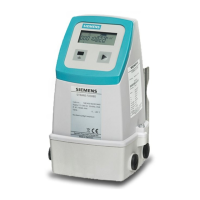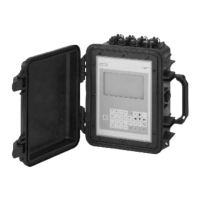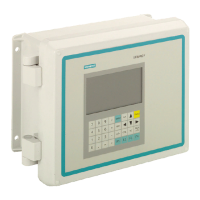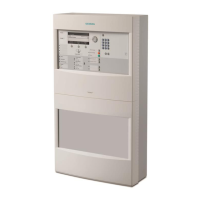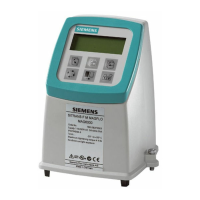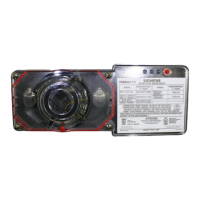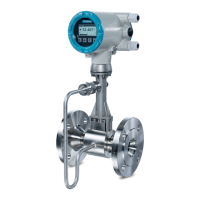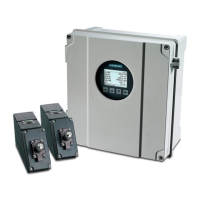Description
3.4 Theory of Operation
FUS1010 IP65 NEMA 4X & IP66 NEMA 7
Operating Instructions, 01/2013, A5E02951520-AC
31
Channel 1+2 produces a data output via a virtual Channel 3, proportional to the sum of the
liquid and energy flow of two independent pipes. You have to set-up two channels
independently. Only clamp-on or in-line transit-time operation is supported.
Channel 1-2 produces a data output via a virtual Channel 3, proportional to the difference of
the liquid and energy flow of two independent pipes. You have to set-up two channels
independently. Only clamp-on or in-line transit-time operation is supported.
WideBeam Transmission
As shown in the figure above, an ultrasonic sensor induces an axial sonic beam within the
wall of the pipe. These vibrations spread along the pipe wall and then enter the liquid in the
form of a WideBeam wave front traveling at an angle to the main pipe axis. The wide beam
"rains" over the receiving sensor. The wide coverage of the receiver is necessary because
the angle of the sonic beam is related to the liquid’s sonic propagation velocity by Snell’s
Law.
%HDP$QJOH $UF6LQH
7UDQVGXFHU3KDVH9HORFLW\
/LTXLG6RQLF3URSDJDWLRQ9HORFLW\
According to this formula, it can be stated that as the liquid sonic propagation velocity
changes so will the angle between the sonic beam and the flow stream.
Therefore, a significant liquid sonic velocity shift could deflect a "narrow" beam transmission
away from the receiving sensor entirely. The upstream vs. downstream transit-time
difference will also be affected by the changing (or refracting) beam angle. This makes it
necessary for flow meter systems to continuously compute this angle, since it is subject to
varying degrees of refraction. The flow meter derives the angle by knowing the fixed position
of the sensors, the dimensions of the pipe and the measured transit-time.
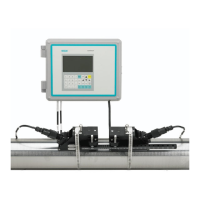
